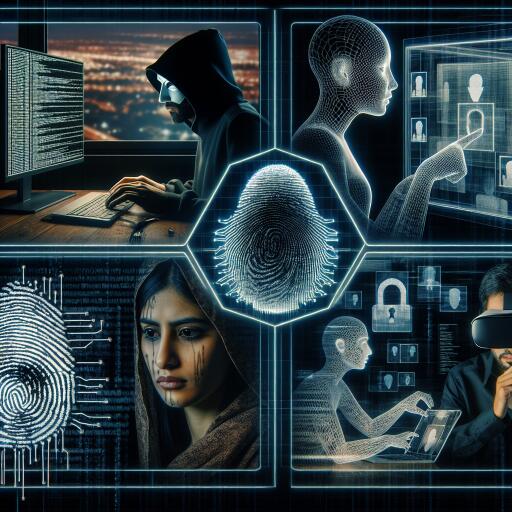Understanding the Rise of AI-Generated Deepfakes in Cybercrime
The realm of synthetic media, which encompasses everything from educational tools for learning anatomy to sophisticated industrial designs and marketing materials, harbors a potential darker side when it comes to its misappropriation by cybercriminals. At the heart of this concern are deepfakes, a subset of synthetic media powered by advanced AI technologies. While not inherently malicious, the wrong hands can turn deepfakes into a formidable tool for deception and cybercrime.
Deepfakes, a term derived from “deep learning” and “fake,” leverage AI to create convincingly real video and audio clips. This technology has been used for benign and even creative purposes, such as rejuvenating Luke Skywalker in “The Mandalorian” or giving Anthony Bourdain a new voice in a documentary. However, these examples also hint at the underlying capabilities that make deepfakes a significant threat when used for malicious intents—imagine not a recreated film character, but an impersonation of a corporate leader or a public figure aimed at deceit.
Early Warnings: The Emergence of Deepfakes
The initial shockwave caused by deepfakes echoed through the internet in 2017 with a Reddit user’s publication of adult content featuring the faces of celebrities swapped onto the bodies of adult film actors. Although this incident itself wasn’t an outright attack, it spotlighted the potential for privacy invasion, leading to a swift backlash, content bans on platforms like Reddit, and even legislative action against such unauthorized use of one’s likeness.
Cybercriminal Uses of Deepfakes
Cybercriminals have since evolved deepfake technology for a variety of purposes, from distorting election campaigns to executing sophisticated financial frauds and extortion schemes. Here are some stark examples:
- Voice and Video Phishing: The first recorded attack leveraging deepfake technology occurred in 2019, involving an imitation of an executive’s voice to facilitate a fraudulent fund transfer. This was followed by an even grander scheme in 2020, resulting in a $35 million theft using simulated voices and fabricated emails to deceive a bank employee.
- Fake Video Meetings: In an audacious incident in 2024, criminals targeted a Hong Kong-based company by simulating a video call with its CFO and other colleagues. This elaborate scam convinced an employee to authorize a transfer of approximately $25.6 million, demonstrating the advanced capabilities of deepfakes in impersonating real individuals.
- Extortion: Beyond financial fraud, deepfakes pose a blackmail risk. Fabricated videos of public figures or executives in compromising situations can be used to extort money, under the threat of releasing these videos to the public and causing reputational damage.
Defenses Against Deepfake Attacks
Protecting against deepfake attacks encompasses education, vigilance, and robust cybersecurity measures. Recognizing the signs of deepfakes, such as unnatural facial movements or inconsistent background elements, is crucial. Additionally, the principle of Zero Trust—never trust, always verify—serves as a foundational defense, encouraging skepticism towards unexpected communications.
Given the escalating sophistication of deepfake technology, maintaining privacy settings on social media and limiting publicly available personal information are practical steps individuals and organizations can take to mitigate the risks.
Looking Ahead
As AI continues to evolve, so too do the capabilities of deepfakes, raising alarms within the cybersecurity community. According to recent research by Barracuda and the Ponemon Institute, 50% of IT professionals anticipate an uptick in cyber attacks facilitated by AI technologies. This calls for ongoing vigilance, updated security practices, and a proactive stance on both personal and organizational levels.
For anyone keen to delve deeper into the distinctions between AI-generated imagery and traditional computer graphics, a fascinating discussion awaits on various online forums, offering insights into the technological advancements defining this field.
In the ever-evolving battle against cyber threats, understanding and preparing for the capabilities of AI-generated deepfakes is crucial. By staying informed and implementing multiple layers of security, businesses and individuals can navigate the challenges posed by these deceptive technologies, safeguarding their assets and reputations against the cunning tactics of cybercriminals.










